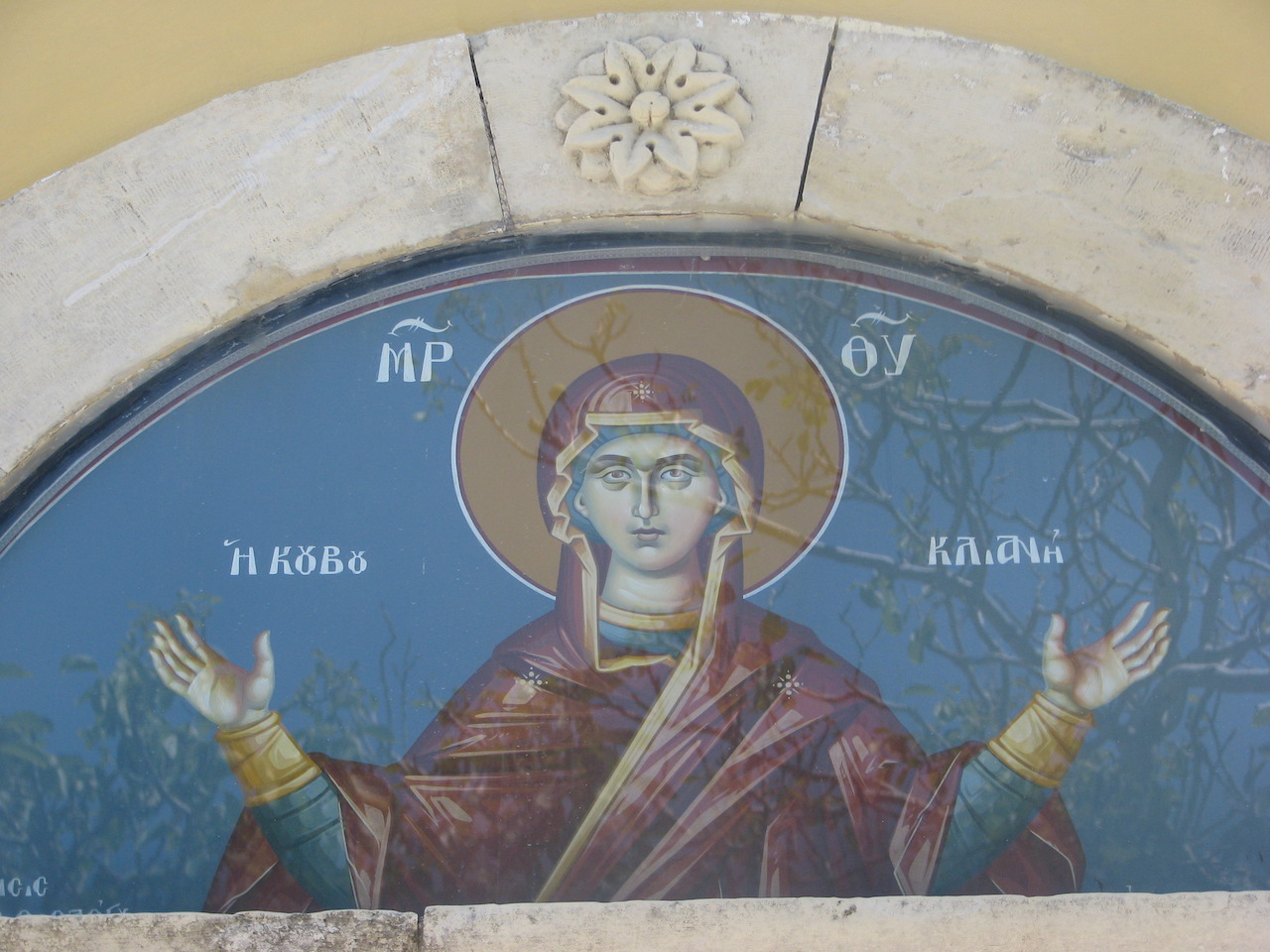Panagia Kouvoukliani: The Church of Koimisis tis Theotokou in Zia
Historical Background and Naming
Panagia Kouvoukliani, also known as the Church of Koimisis tis Theotokou (Church of the Dormition of the Blessed Virgin Mary), is a historic and religious landmark located in the picturesque village of Zia on the island of Kos. This church, with its roots tracing back to the Byzantine period, holds significant cultural and spiritual importance in the region.
In the early 19th century, this church was referred to in the records of the Metropolis of Kos as “The Church of the Most Holy Theotokos of Kouvouklis” or simply “Kouvouklis.” The name “Kouvoukliani” is derived from “Kouvouklis,” which, according to local historian E. Karpathios, possibly originated from an “offikialios” (a church official) in the Asfendiou area, who was honored with the title of “Kouvouklis.” This title referred to the official responsible for carrying the bishop’s staff. Alternatively, the name might also be connected to the church’s dome, as the term “Kouvouklion” in Greek, derived from the Latin “cubiculum,” means a small dome supported by slender columns, which aligns with the architectural features of the church.
Architectural Features
The Church of Panagia Kouvoukliani is an excellent example of Byzantine architecture, characterized by its simple four-column cross-bearing structure with a dome. The church’s dome and nave are notable features that have been preserved throughout centuries, maintaining the essence of Byzantine style. The exterior ante nave, which is two stories tall, was added in 1919, and the church now features new murals that complement its historical significance.
Religious Significance and Monastic Connections
According to local tradition, Panagia Kouvoukliani was built by Saint Christodoulos, the revered founder of the Monastery of Saint John the Theologian on Patmos. However, there is no concrete evidence to support this theory. The archives of the Patmos Monastery refer to the church as “Moni ton Spondon,” indicating that it was built in the 11th century and flourished as a monastery during the 12th century under the reign of Emperor John II Komninos (1118-1143). The church held significant influence in the region, with dependencies such as the chapel of Eisodia tis Theotokou in Kefalovrysi, known for its abundant irrigation waters.
Throughout its history, Panagia Kouvoukliani has been deeply intertwined with the spiritual and social life of the village. It was officially recognized as a parish church by 1860, and during the 19th century, it acquired various properties through donations and bequests from local parishioners. Notable among these was a bell purchased and installed in the church in 1902, as recorded in the Metropolis archives.
Renovations and Modern History
The church has undergone several renovations, most notably in the early 20th century. In 1917, the Metropolitan Agathangelos sought governmental permission to repair the church, which was granted the following year. The narthex was added to the western part of the church, but an inscription above the north door of the main church, “Constructed in 1919,” has caused some confusion among visitors, as it suggests a later date of construction than the actual origins of the building.
During the early 20th century, Panagia Kouvoukliani continued to serve as a vital part of the community, providing financial assistance for charitable purposes and national needs. It also managed several important chapels and shrines in the area, including the chapel of the Transfiguration of the Savior on Mount Dikaios and the chapel of the Presentation of the Theotokos in Kefalovrysi.
Conclusion
Today, Panagia Kouvoukliani stands as a testament to the enduring religious and cultural heritage of Zia. Its rich history, architectural beauty, and spiritual significance make it a treasured landmark on the island of Kos. Whether you are a history enthusiast, a pilgrim, or a curious traveler, a visit to this historic church offers a unique glimpse into the Byzantine era and the deep-rooted traditions of the local community.










